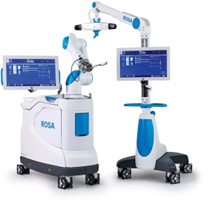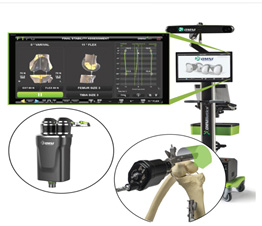The Role of Robotics in Knee Replacement
Much is being said with regard to Robots and their use in knee replacement surgery.
Some surgeons will use robotic technology to promote themselves or their practice, simply to entice patients with promises of “Most experienced robotic surgeon” or “better outcomes with robotic knee replacement”. This indeed sounds great, but what are the facts?
To be very clear a robot is, very simply, a sophisticated (and expensive) cutting tool that a surgeon uses to shape the bone, ready to accept the definitive implant. It does not deliver hands free surgery, nor is it minimally invasive. It is not controlled by a remote surgeon. At all times the surgeon is present and controls the cutting aid.
Many of the implant companies can provide a surgeon with this tool, and each one will have their own ‘secret sauce’ that makes theirs ‘the best’. What is this secret sauce?
The secret sauce in any robotic platform is the software behind the robot. The technology enables the surgeon to assess and plan the surgery before and during the operation, hopefully with the desired outcome of a well aligned, well balanced and comfortable knee replacement. The software can help guide planned bone cuts and soft tissue releases to optimize the outcome for that individual patient.
Early results of robotic technology are encouraging. Certainly, the use of such technology has improved our accuracy. The platforms have expanded our traditional thinking from a ‘one size fits all’ philosophy to a more nuanced and individualised approach. The question however still remains; will this deliver better mid and long term outcomes? Only time and appropriate research will tell.
My practice is actively involved in the evaluation, usage and appropriate followup of several robotic platforms and implants. I am engaged in design and implementation of implants as well as the technology we use to deliver a well aligned, balanced and comfortable knee replacement. By having access to different platforms, I can take the best bits of each and apply them to try and achieve even better outcomes for my patients.
Pics:
Examples of current robotic platform technologies.



